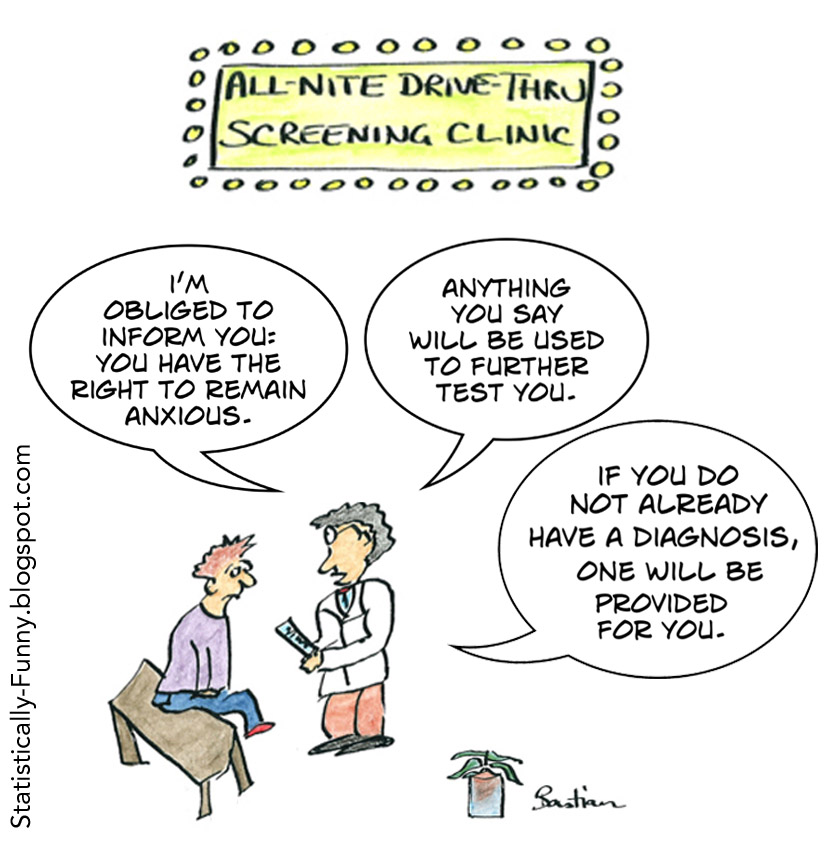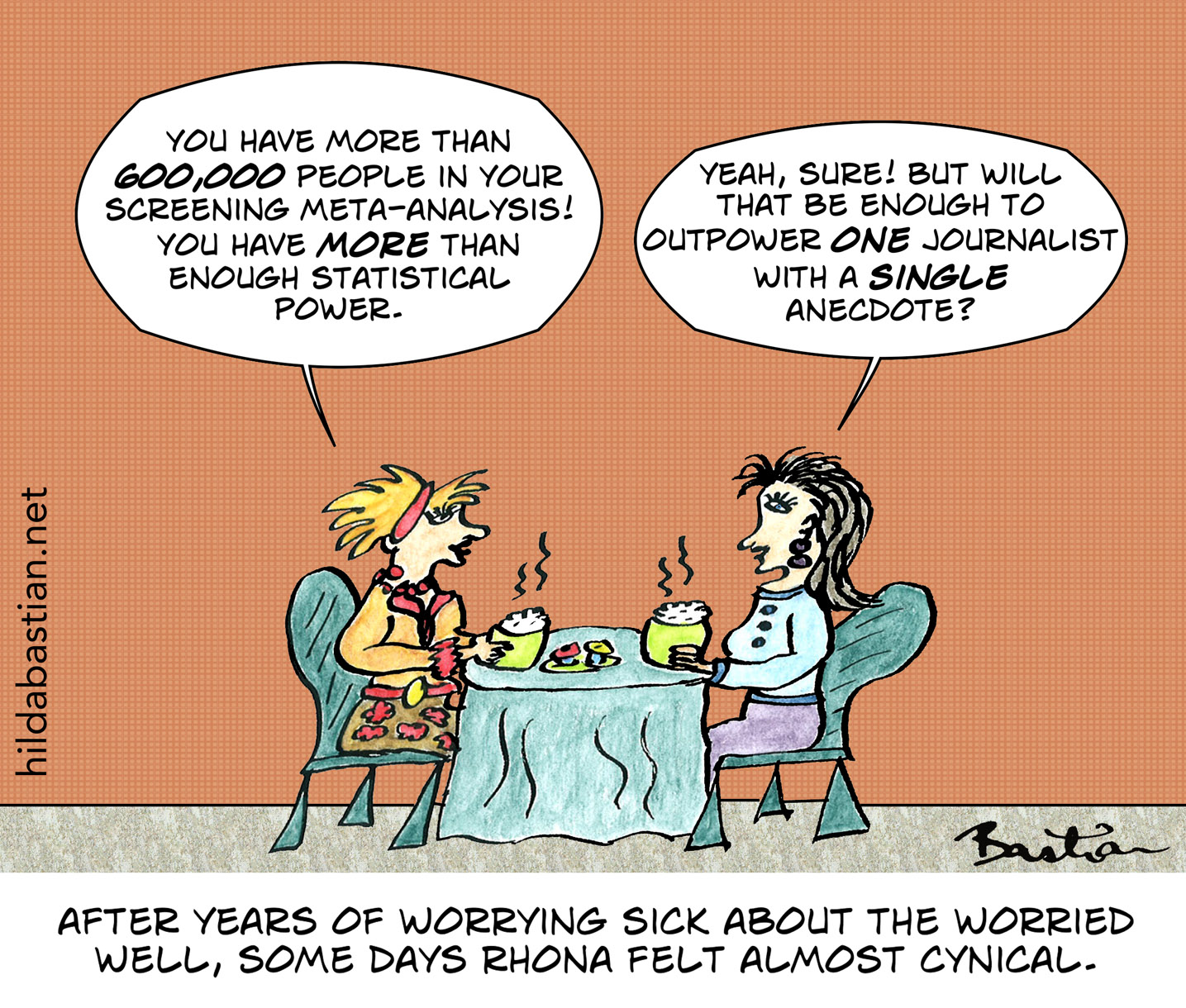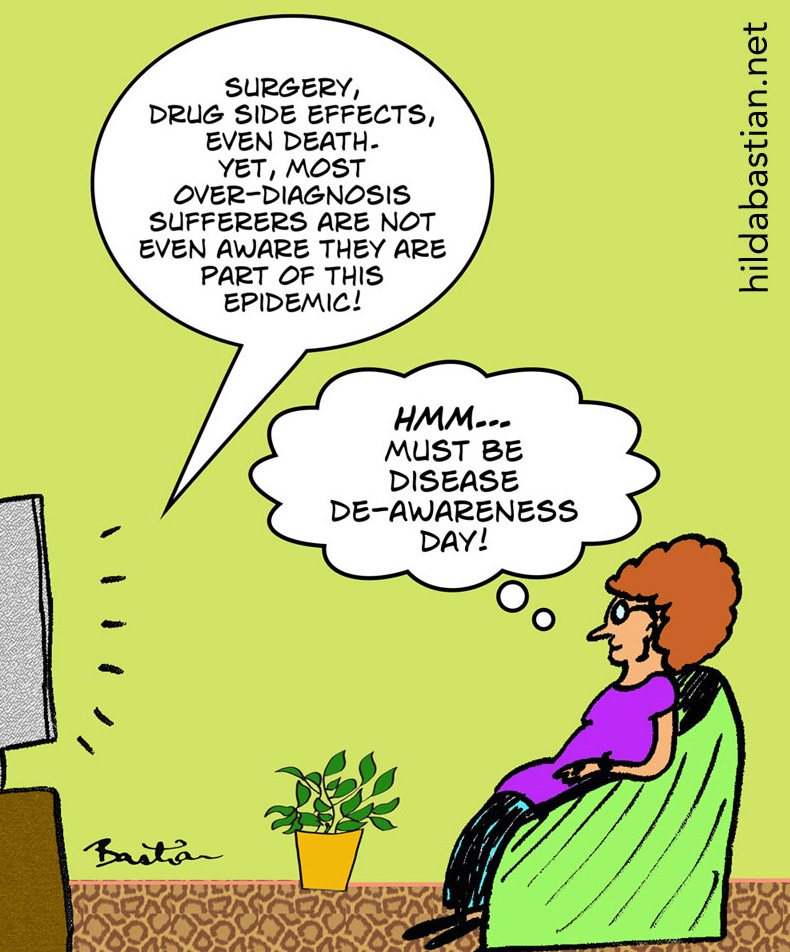The Disease Prevention Illusion: A Tragedy in 5 Parts
Act I: An ounce of “prevention.”
“Prevention is better than cure.” Aphorisms like this go back a long way. And most of our dramatic triumphs against disease come from prevention: clean water, making roads and workplaces safer, antiseptic routines in hospital, reducing smoking, immunization, stemming the spread of HIV.
Many of our cultural superstitions and greatest feats of gullibility are in the name of prevention, too. Of course. We generally have a pretty fervent desire to believe in human actions that can prevent the cruelties of fate. The fear of death eats logic for breakfast.
It’s ironic really. The lure of prevention is freedom from disease. But it has become a key driver of over-medicalization of our lives and a growing shadow of disease angst when we’re the healthiest generation the world has ever seen.
Act II: We’re so lucky they caught it early…
Ignoring symptoms, not knowing you’ve got a dangerous infectious disease, and being too fatalistic about seeking help – these are recipes for disaster. But we tend to portray earliness as if it’s always a virtue, though, and that can be a trap, too.
Why? Because while we can be too late for anything to help, we can also be too early to make a difference for the better. That might not sound like a problem. But it can be.
Some diseases and conditions have a long lead time, developing so slowly, they may never actively threaten our health. When we’re diagnosed early with those, we’ve “had” the disease for longer, but we don’t live longer. All we’ve done is increase our “disease survival” by shortening the “disease-free” part of our lives.

Lead-time bias leads to a wildly misleading use of survival statistics. Even most doctors fall into this statistical trap. It has a lot to do with why early detection so often fails to deliver on the dramatic benefits some expect.
Believing in the benefits of being early without good evidence, isn’t confined to just disease. It’s true of early intervention with children. Dorothy Bishop explains what this means for children with slower than average reading development for example – and Jon Brock discusses the same phenomenon with a theory about detecting autism in babies.
Act III: Screening and the triumph of hope over reason.
Only some screening does good – and it can always do harm. That’s about the reverse of what many people would like to be true.
We’ve just seen one reason that can mislead people – lead-time bias. But there are other phenomena that can exaggerate the benefits: the healthy volunteer effect, for example. Exactly the people who could least benefit from screening, tend to use it more. And they have better outcomes because they were always going to, regardless.
Screening has to help more people than those who would have been diagnosed anyway when symptoms were being investigated. And there has to be a test that’s accurate enough and acceptable enough for widespread use. And there has to be effective treatment that can make a difference if it’s used before there are symptoms.
There’s a double whammy here. Those people who fall into the logical fallacy of thinking, “her doctor found cancer after those symptoms,” therefore “I should be screened” – instead of “I should take symptoms seriously.” And those who ignore symptoms, because they were screened and believe they’re in the clear.
When early intervention fails to halt disease progression, there’s also a trend for some doctors to try to intervene even earlier. Perhaps even screening for “pre-disease.” While it’s possible that sometimes will pay dividends, this is generally grasping at straws. More often than not, we can expect this to be what I call “the pre-disappointment phase.”
Act IV: All’s fair in love and the ideological prevention wars.
There is a science to evaluating the effects of screening tests. There’s a good introduction here. So you’d think that questions about what screening programs are worthwhile could be sorted out.
But the emotional stakes are high when it comes to preventing disease. And many people have become so vested in ideological camps about screening, that they’ve basically become pro- or contra- screening fundamentalists.
Unfortunately, that’s as true of some scientists in the field as it is of other partisans. Michael Marmot is the professor who led an independent panel in the UK through the mammography minefield. He wrote, “people interpret evidence and, indeed, influence its generation. Judgments often reflect more about starting assumptions than they do about the nature of the evidence…[O]ne only has to look at the author of an article to make a reasonable guess whether it will be pro or con.”
If you’d like to catch up on the multiple meta-analyses about screening for breast cancer with mammography, I summarized them on PubMed Commons (archived here).
Act V: The suffering of the over-diagnosed and the spreading cloud of disease angst.
The tragedy of the disease prevention illusion carries a heavy toll. First, there are many people who may benefit most from prevention interventions, but can’t take advantage of ways to improve their life chances. Resources may even be diverted from them because of the increase in diagnoses of others – something Margaret McCartney calls “the patient paradox” and Julian Tudor-Hart dubbed “the inverse care law.” What’s more, the constant bombardment with fearful messages may even backfire.
Then there are the swelling numbers of people who are over-diagnosed, fighting heroic battles with disease phantoms and toxic, mutilating treatments that were never necessary. As the numbers of people being diagnosed with serious diseases grow, the chances we’re affected, or someone we know and love is affected, grow too. And the shadow of fear of disease spreads.
Most of the time we just can’t know what would have happened if…. That doesn’t reduce the feeling of having dodged fate’s sword, though. And the chance that we, or someone we know, are “living proof” of the benefits of early detection makes it hard to get this into perspective. Widening the pool of people who understand and communicate the complexities of clinical effectiveness research with clear view to minimizing their own biases as well seems to me essential.
“An ounce of prevention is worth a pound of cure.” We’ve recognized the false expectations we inflate with the fast and loose use of the word “cure” and usually speak of “treatment” instead. We need to be just as careful with the P word.
~~~~
 Browse through all my Absolutely Maybe’s on screening and prevention.
Browse through all my Absolutely Maybe’s on screening and prevention.
The recommendations of the US Preventive Services Task Force and more information about them is here.
Find out more about preventing over-diagnosis here.
Here’s a more technical primer about bias in finding disease.
The 1968 World Health Organization report by Wilson and Jungner that codified the principles of screening for disease is here.
The cartoons are my own (CC-NC-ND-SA license). (More cartoons at Statistically Funny and on Tumblr.)
* The thoughts Hilda Bastian expresses here at Absolutely Maybe are personal, and do not necessarily reflect the views of the National Institutes of Health or the U.S. Department of Health and Human Services.





Brilliant. Thank you!